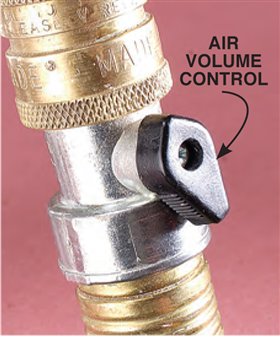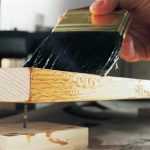We may receive a commission when you use our affiliate links. However, this does not impact our recommendations.
Basic HVLP Spray Techniques
How to
succeed at
spraying a
waterborne
finish
Purchase the complete version of this woodworking technique story from AWBookstore.com.
When it comes to finishing,
we’re all looking
for easy answers that
give professional results.
Shooting waterborne finishes
with a high volume,
low pressure (HVLP) turbine
sprayer is quick and
safe and the results look
like a thousand bucks.
Spraying is a whole craft
in itself. This step-by-step
guide will help you avoid
the most common pitfalls.
Strain the finishWhen you pour finish into the sprayer’s cup, strain it |
Click any image to view a larger version. |
Select the fan patternAll air caps can be set to three different fan patterns: vertical, |
Adjust the airAdjust the air volume: Regulate the air flow |
Adjust the fluidAdjust the fluid volume: Regulate the fluid volume |
Spraying face frames and small surfacesSwitch the air cap For any exterior surface, start the spray before |
Spraying tops1. Spray all four |
Spraying raised-panel doors1. Spray all four |
|
This story originally appeared in American Woodworker July 2003, issue #101. |
Purchase the complete version of this woodworking technique story from AWBookstore.com. |
Here are some supplies and tools we find essential in our everyday work around the shop. We may receive a commission from sales referred by our links; however, we have carefully selected these products for their usefulness and quality.


















